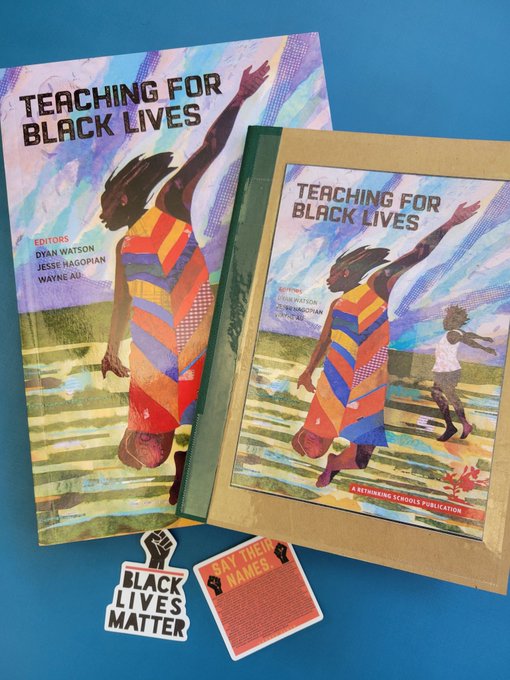Fifteen educators, across all subjects, from the Naperville Community Unit School District (K–12) in Illinois formed a Teaching for Black Lives study group during the 2022–23 school year with the goal of developing ways of centering Black joy, not just oppression, in the classroom. They meet via Zoom every month.
Stephanie Aspan, the group coordinator, created and provided customized journals for members’ written reflections. Every meeting starts with a writing prompt or question and 10–15 minutes of journaling. The theme of a recent meeting was community.
Teaching for Black Lives is giving us a model of how to include and keep in mind the communities we serve. This latest chapter talks about the key connection between schools and the communities they serve.
In what ways are community and teaching for Black lives connected?

Amy Vogelsand, an English teacher, said, “A connection between community and teaching for Black lives is that to be in community should mean to be in a collective struggle toward justice.”
Julia Freed, an assistant principal, said, “We need to create a community within our schools that makes Black students, and any student who’s a part of a marginalized group, feel like they belong at school. Teaching for Black Lives, this study group, and our conversations are providing insight into how we can help start to build that community.”
Other key questions raised in the discussion included:
- What defines a community?
- Who gets to belong?
- Who sets the norms?
- Do our Black and brown students and staff feel like they’re a part of the school community?
- If you’re compliant and play by the rules, do we assume you’re part of that community?
For the remainder of the meeting, members watched a video and discussed the assigned monthly reading “Vacancies to Fill” by Eve L. Ewing, a local writer, scholar, and cultural organizer from Chicago. As an additional resource, Stephanie shared Ewing’s book, Ghosts in the Schoolyard, and her interview with Ta-Nehisi Coates.

